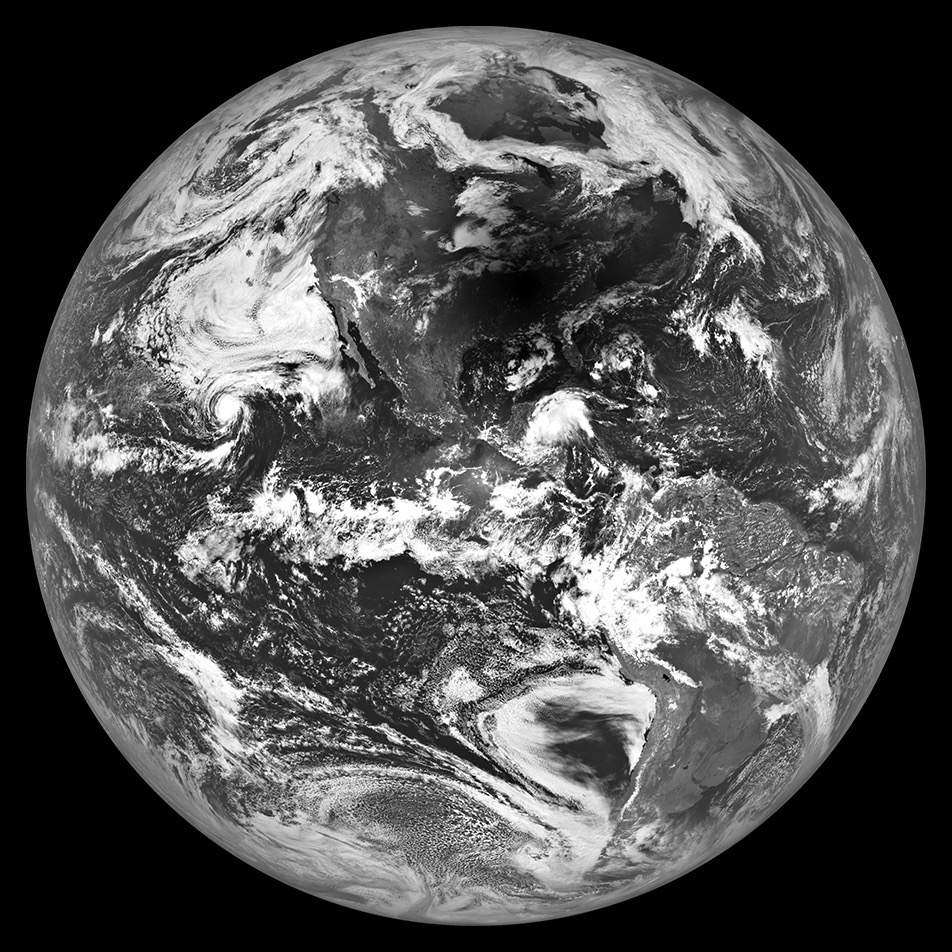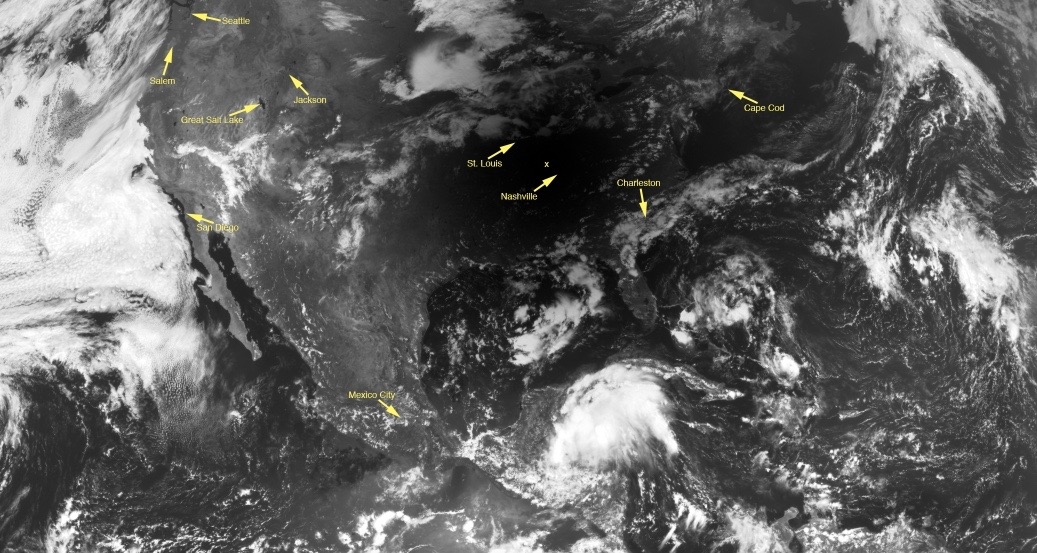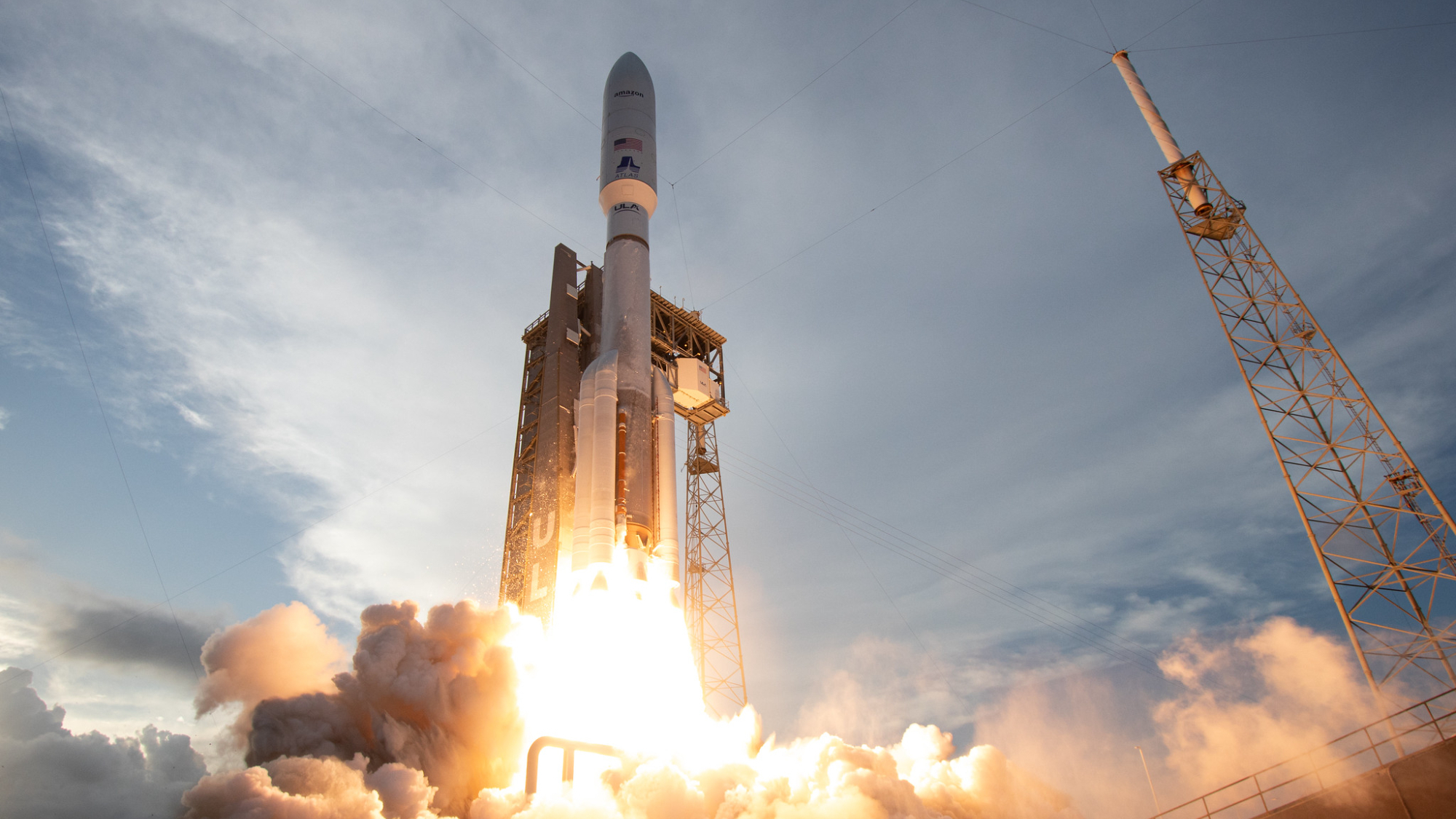NASA Probe Sees Great American Solar Eclipse from the Moon (Photo)


NASA's Lunar Reconnaissance Orbiter (LRO) looked back at Earth and snagged some impressive imagery during last week's long-awaited Great American Solar Eclipse.
As LRO crossed the lunar south pole heading north at 3,579 mph (5,760 km/h) last Monday (Aug. 21), the shadow of the moon was racing across the United States at 1,500 mph (2,400 km/h).
LRO executed a slow 180-degree turn to look back at Earth and capture a photo of the eclipse very near the spot of maximum length of totality. The Lunar Reconnaissance Orbiter Camera's (LROC) Narrow Angle Camera began scanning Earth at 2:25 p.m. and 30 seconds (18:25:30 GMT) and completed the image 18 seconds later, mission team members said.
Typical day on the moon
"While all of Monday's thrill was in experiencing the shadow of the moon sweep across us on Earth, on the moon this was just another typical day," said LROC principal investigator Mark Robinson, of Arizona State University.
"The lunar nearside was one week into its two-week night, while the sun shone on the farside in the middle of its two-week day," Robinson added. "For the moon, and the LRO spacecraft observing the moon, the real excitement is during a lunar eclipse, when the shadow of the Earth sweeps across the moon."
Temperature drop
Robinson added that, during lunar eclipses, surface temperatures on the moon drop rapidly. LRO's thermal imager, the Diviner Lunar Radiometer, can learn about the material properties of lunar rocks and soils by studying their temperatures just after the lights abruptly go out.
"Though for the LRO spacecraft itself, the Earth's shadow means that most of the other instruments must be powered down because of the lack of power coming from the solar panels," Robinson said.
Breaking space news, the latest updates on rocket launches, skywatching events and more!
Launched on June 18, 2009, LRO has collected a treasure trove of data about the moon with its seven powerful instruments. LRO is managed by NASA's Goddard Space Flight Center in Greenbelt, Maryland, for the Science Mission Directorate at NASA Headquarters in Washington, D.C.
Leonard David is author of "Mars: Our Future on the Red Planet," published by National Geographic. The book is a companion to the National Geographic Channel series "Mars." A longtime writer for Space.com, David has been reporting on the space industry for more than five decades. Follow us @Spacedotcom, Facebook or Google+. This version of this story was posted on Space.com.

Leonard David is an award-winning space journalist who has been reporting on space activities for more than 50 years. Currently writing as Space.com's Space Insider Columnist among his other projects, Leonard has authored numerous books on space exploration, Mars missions and more, with his latest being "Moon Rush: The New Space Race" published in 2019 by National Geographic. He also wrote "Mars: Our Future on the Red Planet" released in 2016 by National Geographic. Leonard has served as a correspondent for SpaceNews, Scientific American and Aerospace America for the AIAA. He has received many awards, including the first Ordway Award for Sustained Excellence in Spaceflight History in 2015 at the AAS Wernher von Braun Memorial Symposium. You can find out Leonard's latest project at his website and on Twitter.

